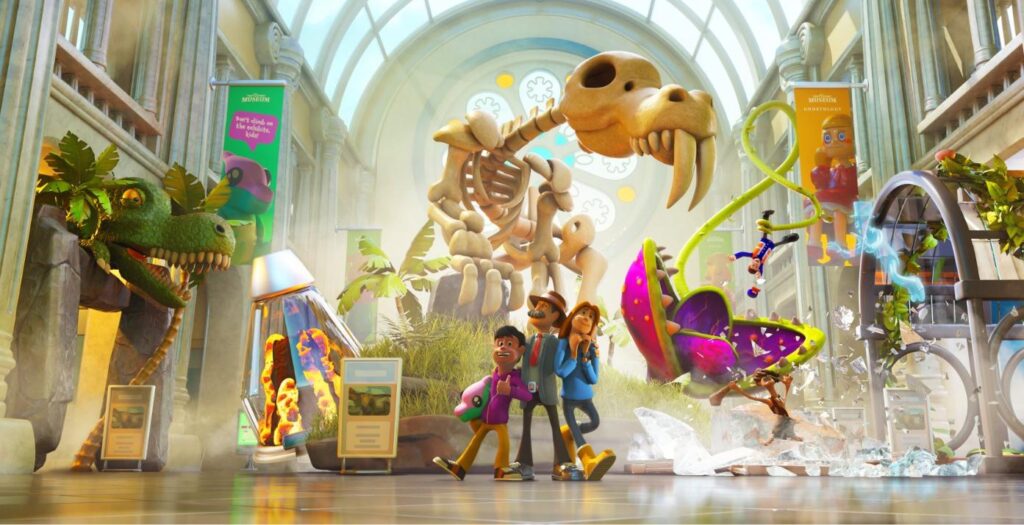When I first started playing Two Point Studios‘ management sim games, I thought they’d be simple. With a hyper-stylized animation style, it’s easy to underestimate the system depth and customizations, but as I worked my way through Two Point Hospital and Two Point University, it was clear how much care and attention was given to creating an approachable game while never sacrificing management depth. This continues with Two Point Museum.
Developed by Two Point Studios and published by SEGA, Two Point Museum is currently the first and only museum management sim. It is part of the Two Point universe and, of course, takes place in Two Point County. The studio continues to bring a deep knowledge of what makes management sims compelling and a visual style that sets it apart from others in the genre.
In Two Point Museum, your task from the county is to build successful and prestigious museums. Two Point Museum allows you to step into the shoes of a museum curator. In each museum, you manage and display spectacular exhibits that start in reality and quickly highlight Two Point Studios’ fun and resonant humor as you move from traditional history and marine life to the supernatural, carnivorous plants, and, um, outer space.
While you begin your campaign in Memento Mile (with a prehistory museum), you unlock a total of five museums across Two Point County. This includes Passwater Cove (Marine Life), Wailon Lodge (Supernatural), Bungle Wasteland (Science), and Pebberley Heights (Space), all of which have their own aesthetic that lends to expanding and developing them across your time in the game. Curating each of these museums is a task that requires you to focus on each location’s missions and specific needs.
With each museum having self-contained revenue and exhibits, you’re not forced to manage them all at one time. This allows you to put your focus where it needs to be at the moment, find reprieve when you hit a wall, like losing a lot of money in one location, and, most importantly, move at your own pace.
Being in control of the game’s pace is essential to always feeling like you’re in control of what is happening. You can slow down the speed, accelerate it, and pause. You’re sure to use all of these when the time calls for them. I’d pause to build, accelerate once I went positive to make more cash, and then move more slowly when I’m in the red and trying to figure out why.
Creativity and customization are the real endgame for Two Point Museum.
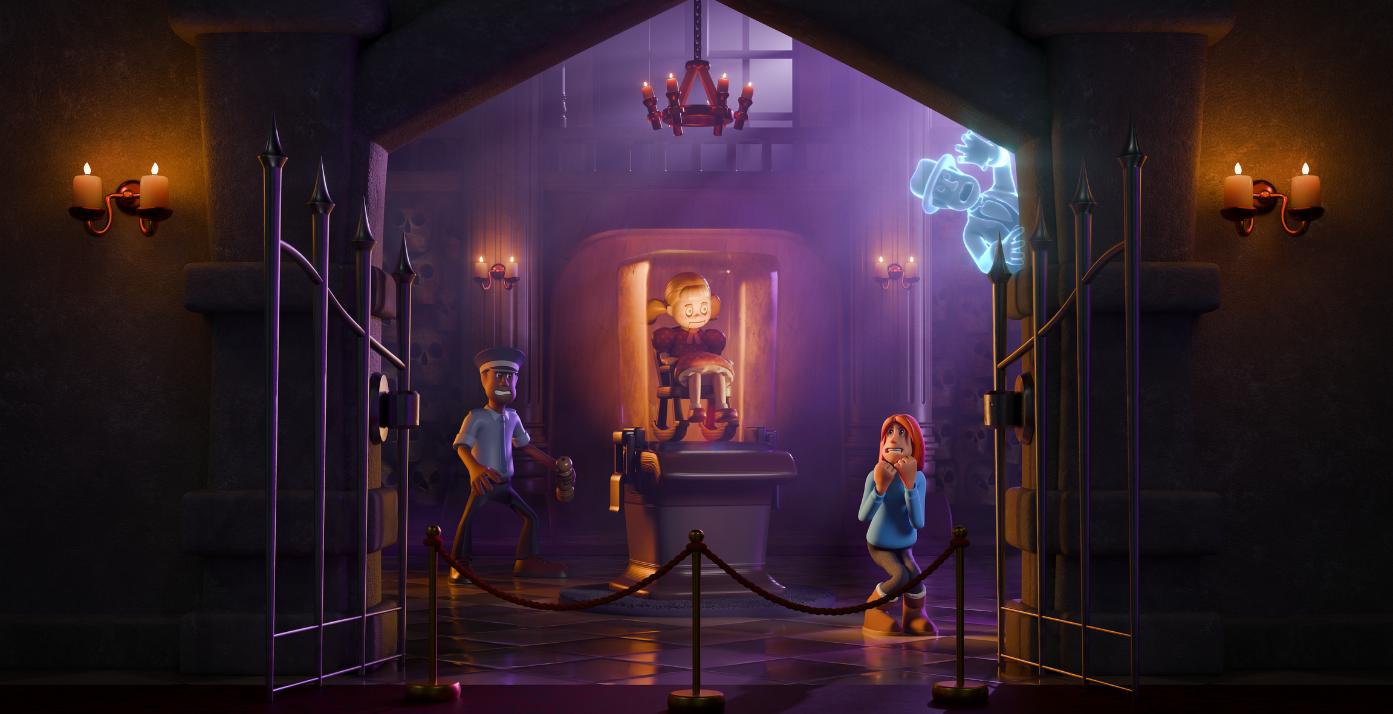
With over 300 decorations themed for the five different expertise areas (prehistory, marine life, the supernatural, science, and space) and unlockable through research and spending a specific amount of Kudosh currency, each area can feel absolutely unique. Additionally, there are 200+ exhibits to find, with six main types and different subcategories. This allows your museum to develop dynamically, especially when you begin to find exhibits that fit into multiple categories.
With so many decorations and exhibits, you would expect them to lose uniqueness along the way. But they don’t. The fine details put into the exhibits allow players to play favorites easily but also become invested in building larger and larger areas dedicated to specific exhibits. Every one of the exhibits is excellently rendered, with some offering more interesting interactions when you move them, your guests interact with them, or they haunt your poltergeist rooms.
My favorite museum isn’t the mega museum I built in Memento Mile; it was the time I spent with Wailon Lodge. With a supernatural theme, the design of the exhibits lends to creating wide-open floorplans instead of sequestering them in different rooms. Additionally, with some items having curses attached, the random scares that will send your guests running make building outlined paths with half walls or rope an exciting an lucrative activity if you do it right.
When it comes to the supernatural exhibits, the humor is spot on, and it’s the Annabelle-esque doll in a glass case that offers the most spooky factor and interaction for the player. When you pick up the item to move it to a new location, the doll’s head moves a full 360 degrees to match where the camera is; it trains on your pitch and angle perfectly. It’s a small thing, but Two Point Museum excels in the small things.
Every decoration, exhibit, staff member, and item you can create in the workshop works to pull everything together. But more importantly, iterating on something you love can yield even better results as you aim to make bigger and better museums. Creativity is key, and with all the small things adding to large and extravagant exhibits, it pushes you to build beyond what you expected.
To use a grid or not to use a grid when building should be a straightforward question.
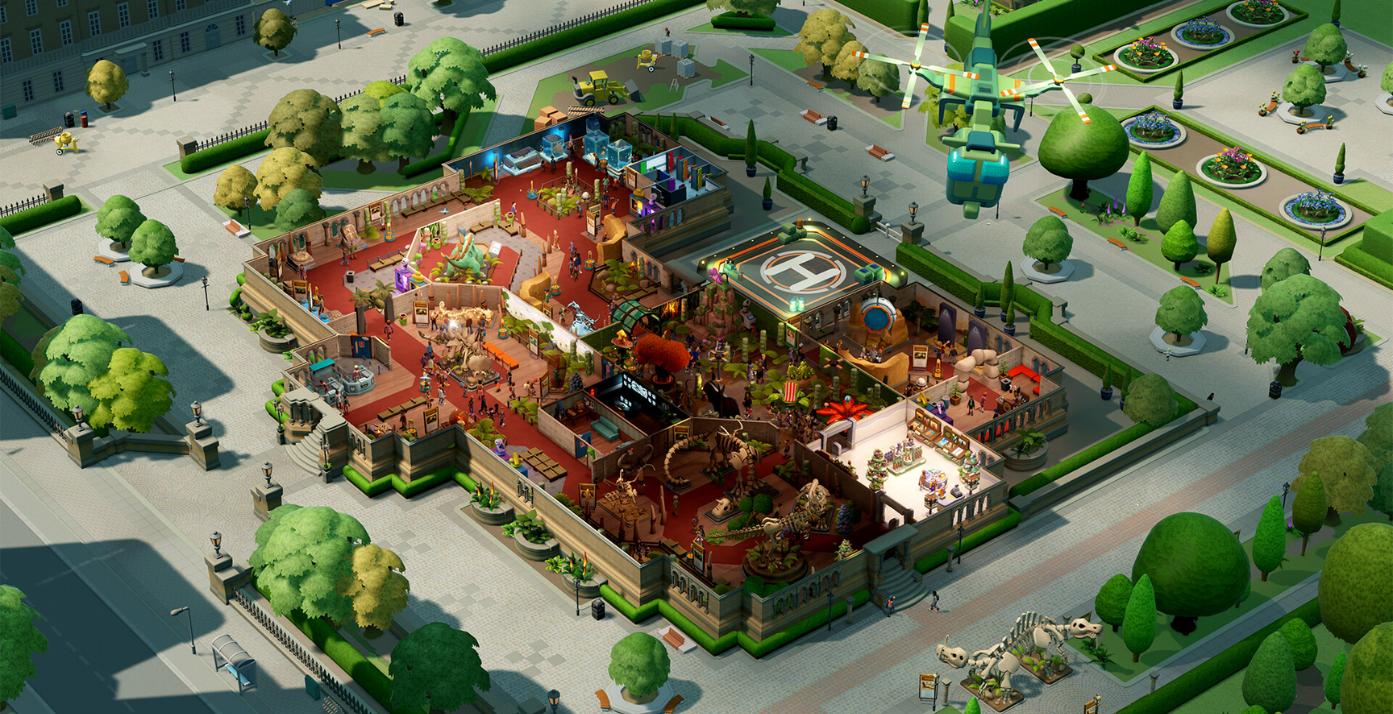
The only issue is that you can’t turn on a grid indefinitely or remove snap, either. Those have to be toggled on or off from the default when customizing areas. Additionally, the grid is only usable when you’re placing walls, pony walls, and railings. It’s the one customizing feature that makes editing and designing your exhibits sometimes frustrating when you’re trying to center things perfectly in their designated exhibit areas.
Ultimately, the replayability and reward for constant iteration make Two Point Museum truly excel as a business management sim. Even outside of the sandbox mode, nothing in this game is one-and-done. This comes from the varied grade levels of artifacts from Average to Pristine and the fact that you can analyze exhibits to unlock new decorations and boost items. The endless star-scoring system encourages you to tweak the layout of your museum depending on what you discover with each subsequent expedition.
Additionally, since some exhibits can only achieve decoration scores once you’ve fulfilled specific requirements, there is a chance that you won’t have the correct decoration researched yet to get the most out of your exhibit. This encourages you to keep going on expeditions even after you’ve recovered every artifact from the locations to keep analyzing and unlocking new decorations. The core loop of going on an expedition, building the exhibit, and then iterating allows you to stay attached to the game instead of just setting it on cruise control once your margins are in order.
Because of how Two Point Museum has designed the progression of each expedition type and put decorations behind gates, there aren’t any areas you can neglect. This goes further by bolstering the importance of security guards as your museum also becomes prestigious. Whenever I made a new exhibit for the first time, I knew it would just be a first try.
Two Point Studios’ signature style is everywhere, but this management sim always feels unique.
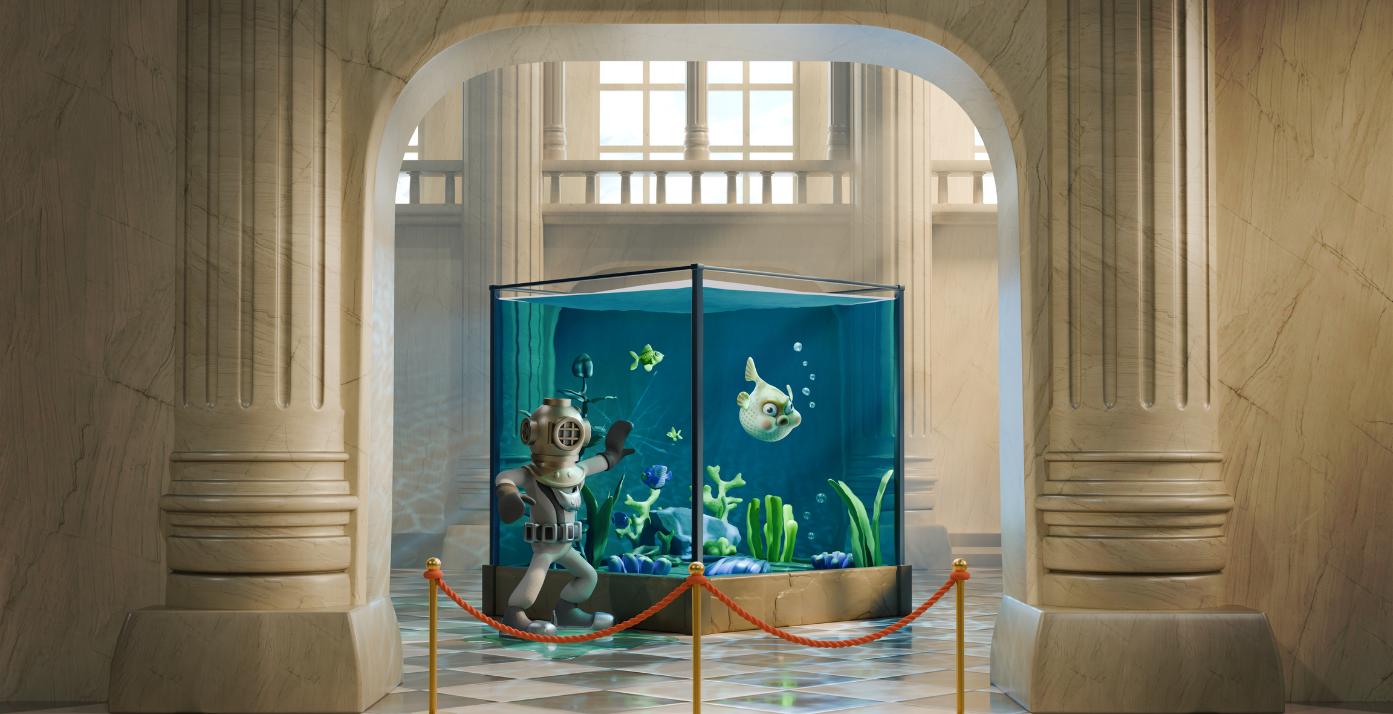
Additionally, because of its pause feature, which allows you to control the game’s pace, you can even sell your whole building and start again if you’re inclined, or just load up one day and start to think what you’ve made is ugly. Yes, I did that. However, that freedom to sell, build, decorate, and keep changing makes Two Point Museum a blast to play when it comes to engaging with the visuals and content of the game outside of the systems management.
That isn’t to say that balancing revenue and expenditures isn’t a key focus for the game; it is. And, of course, finding the right balance of enough staff to manage your facilities so that you can compensate fairly and have the right skills is part of the fun (and the headache of running a museum). Two Point Museum returns familiar menus from past games for staff management. In addition to choosing which tasks each employee will focus on, you can assign them to different areas, ensuring they stay where needed.
The staff types are split between Experts (with specialties for each), assistants, janitors, and security guards. When upgrading each, it’s important to note their base skills and build around them. It’s also important to not build every staff member the same way. This comes into play as Expeditions expands to include more than just your research Experts.
There are five main zones for expeditions: Bone Belt, Two Point Sea, Netherworld, Bungle Bunker, and Known Universe. Each one aligns with the main specialty areas, as the museums do: Prehistory, Marine Life, Supernatural, Science, and Space, respectively. Each themed area has multiple locations to engage with and unlock as you fulfill different requirements that aren’t always immediately made clear.
At the same time, you have to meet each requirement in Expedition Logistics to continue to improve the quality of items you can find on them, remove events that cause injury, or extend how long the expedition lasts. While it’s not always clear how to unlock new areas (often determined by elements held in your museum), the logistics menu tells you exactly what you need. The former may be slightly frustrating, but the latter gives you a finish line to cross.
Staff salaries are core to managing your budget, but you also have to engage with your employees in more minute ways. To get the most out of your staff, making sure that they are placed in needed positions only is essential to making sure every booth is staffed, every tour is running, and, well, that your live exhibits, like fish or plants, don’t die from neglect (or your ghost escapes from its poltergeist room).
Two Point Museum Pro Tip: Hire more janitors.
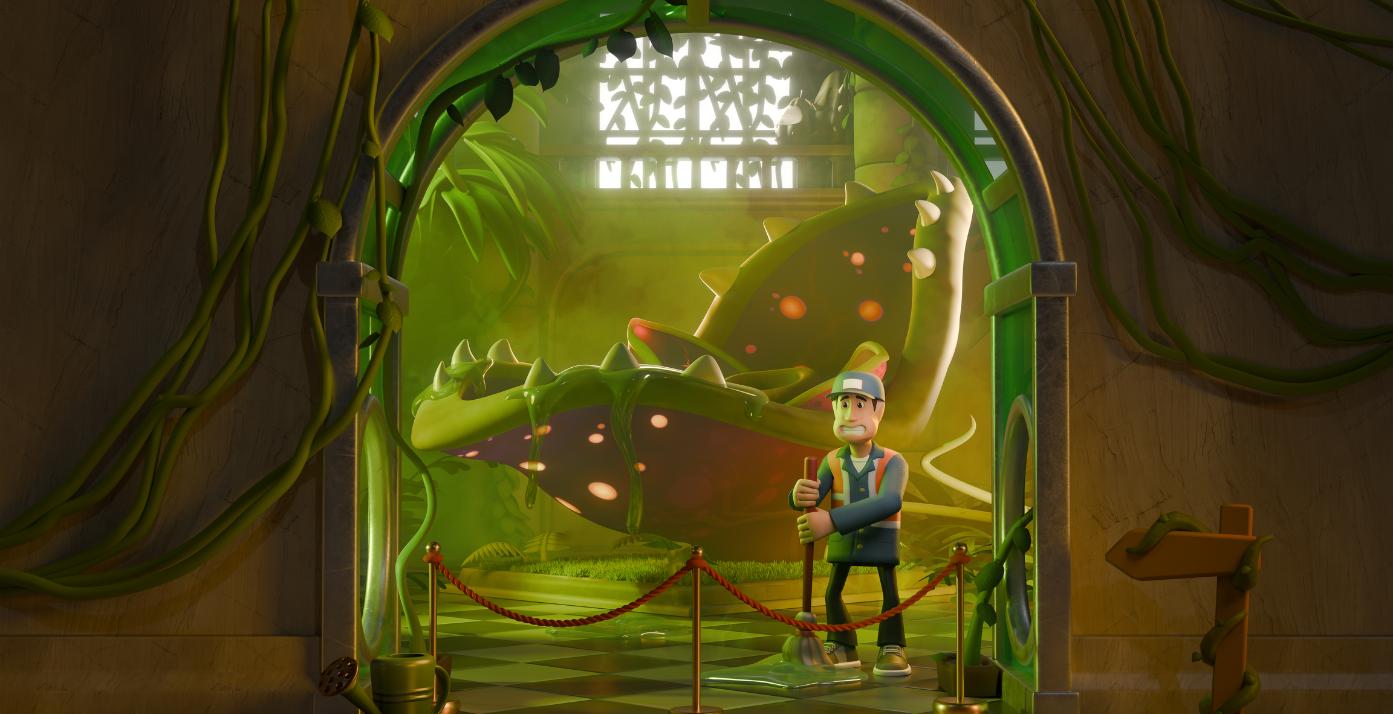
The only issue with the staff is that the staff-only areas (staff room, training room, etc) feel way too limited compared to the complexity of the design you’re allowed to do in the museum’s different regions. Especially compared to what could be added to faculty areas in Two Point University. But, by building hallways and sections around those dedicated spaces, you can mostly make them interesting.
Additionally, as your museums expand, so does your security, offering security cameras, gates, and camera rooms to guard artifacts. The complexity of expanding security comes from understanding the radius around the camera room, making more than one necessary, and how they work in tandem with security gates.
The one common mistake I kept making was hiring more and more assistants to staff my gift shops, ticket booths, and cafes. By doing that, my bloated budget left me little room to invest where I really needed to: janitors. You need a lot of janitors, which is no different from Two Point University. As you add more attractions, you need more janitors to keep them functioning. Add more food and drink? You need more janitors to clean up. Same with the bathrooms.
With 18 visitor types, learning how to balance sometimes contradictory needs is essential. Finding the correct number of trashcans for your patrons’ can be difficult. You need to understand that customers will usually pick up a free water fountain drink rather than buy one from a machine, and ultimately, you need to know where the best donation stands are, both of which impact your money. Balancing where the patrons walk impacts how many donation stands, trashcans, and the like you need, and the movement isn’t always predictable. Understanding what each facility and interactive item needs to be maintained is critical to keeping your museum focused and your budget on the mark.
Balancing your creativity against your staff and patrons’ needs is key to building a buzzworthy museum.
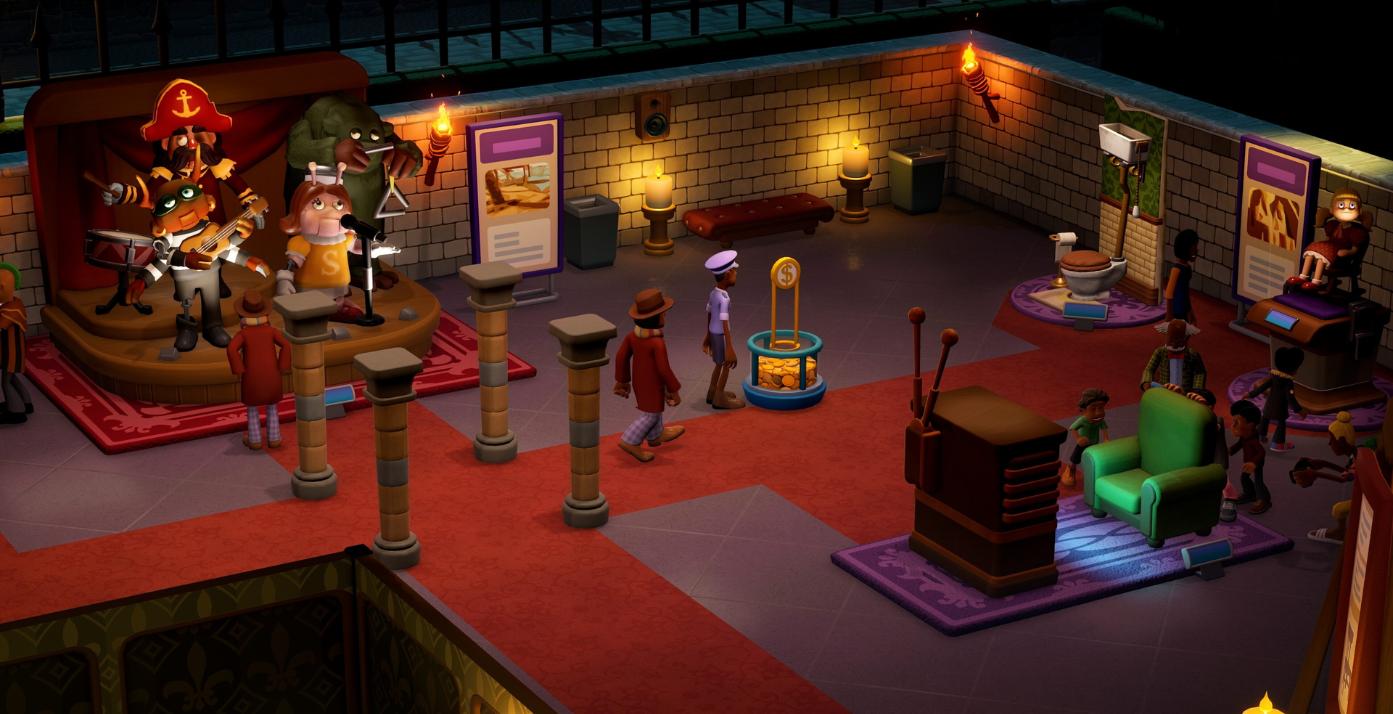
Two Point Museum offers a lot of depth through minimal explanations. Using large cartoon icons to denote issues, the game’s visual language is just as essential as the text you read. This also means that it lowers the age requirement to engage with systems in more holistic ways. Striking the balance between detailed management systems and ease of learning them makes Two Point Museum and other games from the series essential to the game type’s landscape.
The only slight downside to Two Point Museum is that I had three crashes throughout my time with the game. The farther you get in the game, the more tiny technical issues begin to happen. They’re usually easily undone with a quick reload of an older save. Thankfully, though, the autosave feature is so well-paced that I rarely had to keep my own saves.
Two Point Museum is a fantastic addition to the Two Point management sim title list. It lives up to the studios’ past games but never feels derivative. Everything about the game feels special. It provides a blended experience accessible to new players first before it begins to layer new systems into the game, building depth for the more seasoned management sim fans. Two Point Museum is a stunner of a game, and with subsequent support and patches, it’s clear that even my minor hiccups will be solved.
Two Point Museum is available now on PC, PlayStation 5, and Xbox Series X|S and has been verified for Steam Deck.
Two Point Museum
-
Rating - 9/109/10
TL;DR
Two Point Museum is a fantastic addition to the Two Point management sim title list. It lives up to the studios’ past games but never feels derivative. Everything about the game feels special, providing a blended experience that is accessible to new players at first before it begins to layer new systems into the game, building depth for the more seasoned management sim fan.

